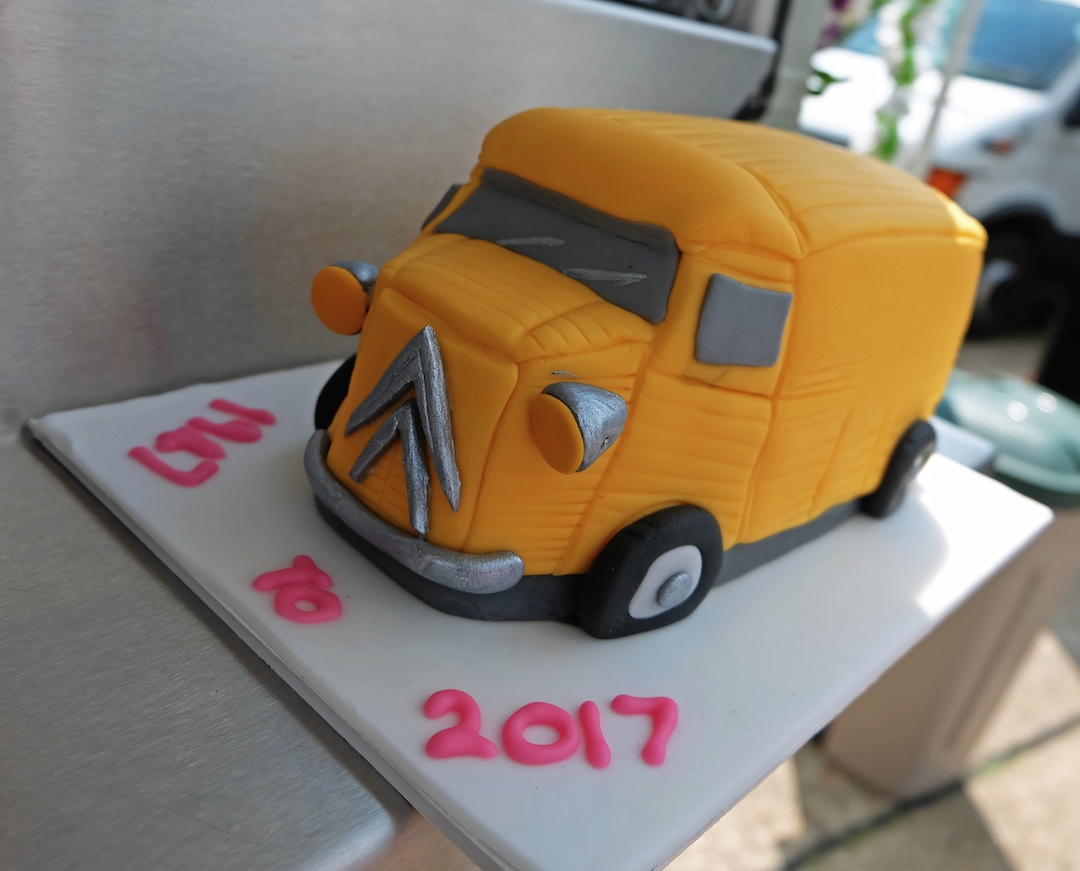" The ‘umbrella on wheels’ or the ‘tin snail’, the unmistakable Citroën 2CV has also been a 24-hour endurance racer, a James Bond film star, a delivery van, a beach buggy-type fun machine, and, in twin-engined four-wheel drive ‘Sahara’ versions, "

Hip to be square – 70 years of the Citroën H Van
From rugged workhorse to cool commercial landmark on nearly every street corner, the Citroën H Van has undergone quite a transformation in 70 years
Ubiquitously hip. That’s the best way to describe Citroën’s retro light commercial in 2017, a mammoth seven decades since it first appeared on French roads.
A capable workhorse after the end of World War II, it wasn’t meant to be a cool commercial at all. But now, like its equally omnipresent Volkswagen Type 2 rival, it’s a vehicular landmark on streets all over Europe. And just like the VW, it is now most often seen with its side panel or rear doors open dispensing all manner of hot beverages or snacks to passing hipsters.

In production from 1947 to 1981, the Citroën Type H (also called the Type HZ and Type HY) was, functionally, a simple square box for carrying things. However, far from simple mechanically, the H Van was the most advanced light commercial of its period, and borrowed advances from its pioneering Traction Avant relative. The first mass-produced front-wheel drive commercial vehicle, a unitary monocoque body with no separate chassis frame, four-wheel independent suspension, and rack and pinion steering all translated into a beneficial language that spoke to technologically-minded business owners who placed innovative practicality above all else.

The French box-on-wheels enjoyed a flat floor, an 850-1,500kg payload (depending on version), a 6ft internal standing height, as well as a side loading door, a feature which would not be standard in the UK for decades. An innovative arrangement of three rear doors – one which lifted up like that of a hatchback car, with two suicide-hinged ones below – meant that goods could be loaded and unloaded under shelter.

The floor could take the weight of a horse, while enclosed van, pick-up and stripped-down body for coach-built derivative versions were available. Myriad wheelbase lengths were available, too, and with its wheels pushed out to its corners like the original Mini, the H Van boasted a relatively low centre of gravity for a commercial vehicle, which aided handling.
Not that you’d be going fast enough to experience the ultimate in roadholding. Even though the first H Vans were fitted with a large 1.9-litre petrol engine similar to those of the Traction Avant and DS, it was only bestowed with 35bhp and a top speed of 47mph.
A brace of 42bhp 1.6-litre and 50bhp 1.9-litre diesel engines appeared later, but were still far from powerful enough to dislodge the syrup which is now drizzled over the crepes now served from many an H Van. But whatever the engine flavour, the H Van’s recipe undoubtedly worked: 473,279 examples of Citroën’s corrugated commercial darling were made over an incredible 34-year period.

Of course, it’s that distinctive ribbed bodywork – borne of German ‘Junker’ aircraft and requiring uncomplicated low-cost pressing tools – and the pig-like snout which have elevated the Citroën Type H above other commercial vehicles. Now ever present in urban and festival landscapes, it has a retro look which endures seven decades after it first appealed to those delivery drivers, vendors, and animal-carrying famers of the 1950s.

A sure sign of a cult vehicle, the H van still inspires, too: FC Automobili has launched a limited 70-set run of fibreglass kits to transform Citroën’s current Relay van into an €42,900 H Van tribute. With a total of six conversions and much more loadspace on offer, there may well be twice the body style choice of the original, but there’s certainly only a fraction of the distinctly French brutal elegance.

But why has the boxy Citroën transcended time to become a bona-fide cult vehicle? While new-found retro appeal is one answer, adaptability is another. “The addition of crepe plates in a French van serving coffee made sense, and our summers have never been so busy!” say Mark and Sally from catering company Van Chaud, who have operated a restored and converted food-vending 1969 H Van since 2012, bitten by the vintage Citroën bug after running a 2CV parts business.

There’s no doubt that very few commercial vehicles combine the style and long-lasting appeal of the Citroën Type H. And while its technology and make-up may no longer be cutting edge, it offers a crowd-pleasing allure and rugged beauty which has won it many fans. We raise a glass (or a plastic lidded coffee cup) to the Citroën Type H and wish it many happy returns. ‘Bon Anniversaire’ – here’s to 70 years of Citroën’s cult and cosmopolitan commercial!
Image credits: http://www.citroenorigins.co.uk/en/cars/type-h
CLICK TO ENLARGE











